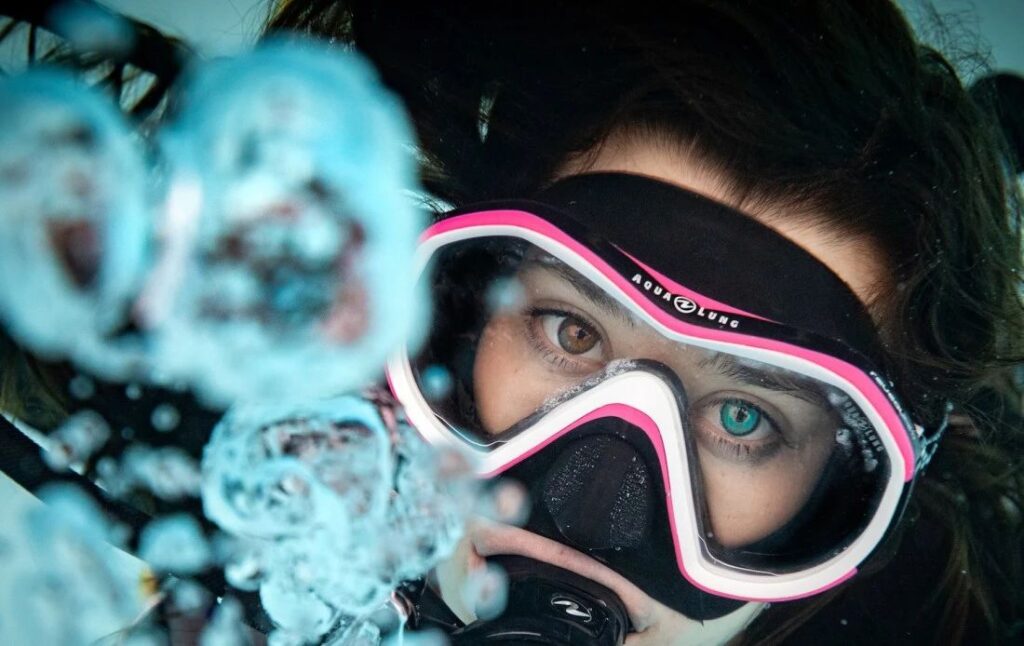Investing in your own scuba gear is always super exciting! So, when you get home with your new mask, you will probably want to go diving as soon as possible to try it out! However, there is nothing worse than a mask that is continually fogging underwater, and new masks can be the worse culprits for this unless they are properly prepared beforehand.
Why Do New Masks Fog?
During the manufacturing process the lenses of the mask are coated in a fine layer of silicone. The silicone protects the lenses and prevents them from becoming scratched during manufacturing, storage and packaging processes. The protective layers however, cause a lot of fog and the mask will continue to fog until it either gradually wears away, or something is done to remove it. Thankfully, there are a couple of ways to remove it without damaging your new mask!

Use a Cleaning Agent
The best options are either a commercial agent, such as Softscrub or toothpaste. If using toothpaste it needs to be the paste form as opposed to gel and not a whitening variety. Whitening toothpastes contain small crystals to remove stains from teeth and these crystals may scratch your mask.
When using a scrubber, apply a bead sized drop of either toothpaste or Softscrub to both the inside and outside lenses. Use your finger tip to scrub the paste vigorously all over both sides of the lenses, concentrating mostly on the inside of the lens. Make sure you scrub every inch of the lens. DO NOT use a textured sponge or steel wool to scrub as this will scratch the glass.
After scrubbing all parts of the lens, rinse thoroughly with fresh water. If you are not in an immediate rush to use your mask, you may also consider leaving the toothpaste or soft scrub on the lenses overnight.
Let your mask dry and then store it back in the original plastic box it came in. If done properly, this silicone removal process is only a one-time deal. You will need to use defog on your mask during each and every dive.
Burning the silicone
This second method should only be attempted by a professional who is experienced in the method. If done correctly, it can be highly effective, but if not done correctly there is a risk that you may damage your mask.
Using a lighter, it’s possible to burn away the silicone. It’s important to position the lighter so the tip of the flame is just below the lens (hold the mask horizontally to do this and position the lighter directly underneath). The tip of the flame needs to be kept moving around the lens to avoid the lens becoming too hot in one place. Extreme care needs to be taken that you do not burn or melt the silicone skirt at the edges of the lenses. Don’t be surprised if the lenses darken during the process, it’s soot from the silicone burning off.
After you have treated the inside and outside of both lenses, rinse your mask and the soot will wipe away.
Let your mask dry and then store it back in the original plastic box it came in. If done properly, the silicone will have been removed and you will just need to use defog on your mask when diving.
Use Defog on Every Dive
Just because you have removed the silicon, remember to defog before every dive. Apply a drop of defog into each lens, rub it around with your finger tip, then rinse before donning your mask for the dive. If you do not have a commercial defog available, you can also use dish washing soap, shampoo, toothpaste and even saliva!
By following these simple but essential steps in preparing your new dive mask you’ll be able to make happy and fog-free dives time and time again!

Are you ready for your next diving adventure? Check out all the available dive resorts, liveaboards and day trips on PADI Travel.



